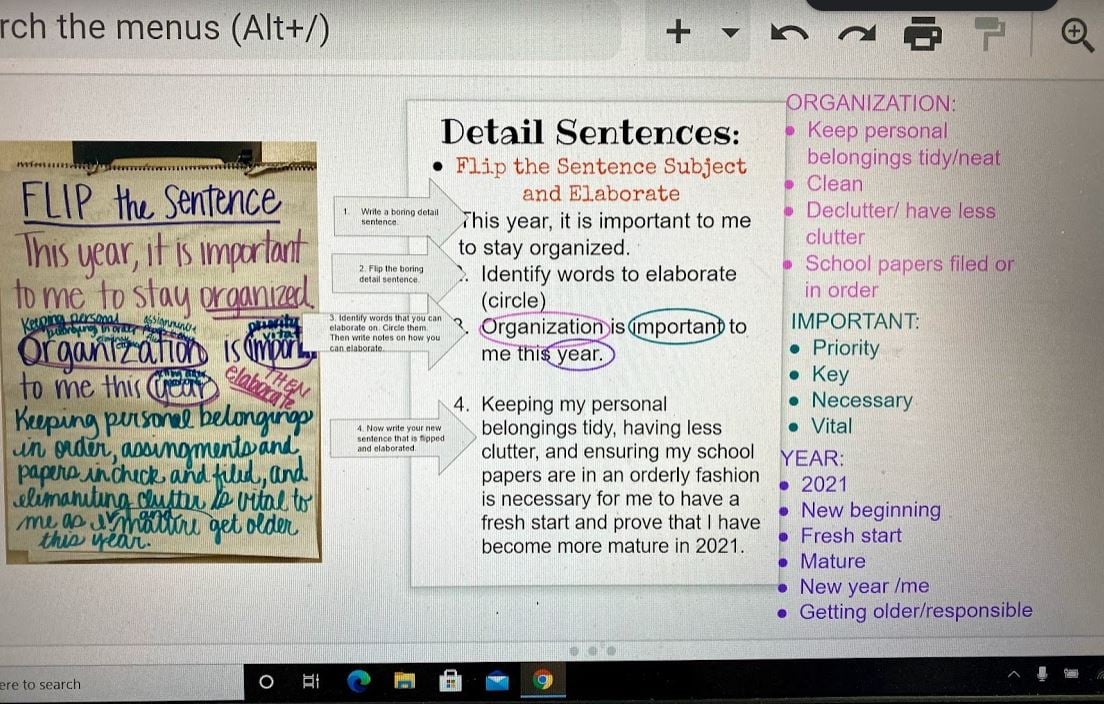Informational/Expository Writing | Detail Sentences
Vision Board Essay Details! #1: Flip the Sentence
Read Time 2 mins | January 2, 2022 | Written by: Kylene Reed
One of my biggest struggles as a writing teacher prior to EW was getting actual details that supported the main idea out of my students. I knew that the details they were generating were meaningless, however, I didn't know how to pull the information from them. Now, Empowering Writers gives teachers tools for their toolbox that they can model and use with their students. Then, students will transfer the tool to their own box of strategies that they know they can use each time they write. This week, my students are writing the body of their Vision Board essays, and we are working on sentence variety. The next few blog posts will cover each of the strategies that I want my students to be able to use in their own writing.
As I teach strategies, I want to make sure that my students are able to use the strategy for all of their essays. This way I know that they will not just rely on one tool from their toolbox, but be able to use several in their piece. This is what skilled authors do- they show off all the writing techniques they know in their writing.
I am teaching B-O-T-H students at home and students in person at the same time, so my modeling looks different in each period. When I do not have any online students, I use my chart paper and markers, but if I have any students online in one of my periods I model in a google slide. When I am finished, I include a sample of both, like the image below for students to use as a resource!
Strategy #1: Flip the Sentence Subject and Elaborate. In this tool, students begin by writing a simple detail sentence. This is nothing fancy, just states the detail from their planning pillar in a complete sentence. From there, students will flip the subject to the end of the sentence. Once the sentence is flipped, the "meat" that is needed to support the main idea is still lacking, but what I have done is add variety to the cadence that students fall into in repetitive writing. Now it is time to elaborate. I have them circle any important words that they could tell me more about. I do not give a specific number. What I have found is that students quickly realize that it is much easier to do the writing once they have elaborated. The more they elaborate the easier it is to write. From there, we just put our sentence back together. In their writing journals I have given them the PDF downloads of sentence starters and transitional words and phrases that are found in your EW guides to use when building sentences.
Here is an example of what my modeling looks like from beginning with a simple sentence to the new elaborated detail sentences.

Stay tuned for more strategies on detail sentences!
